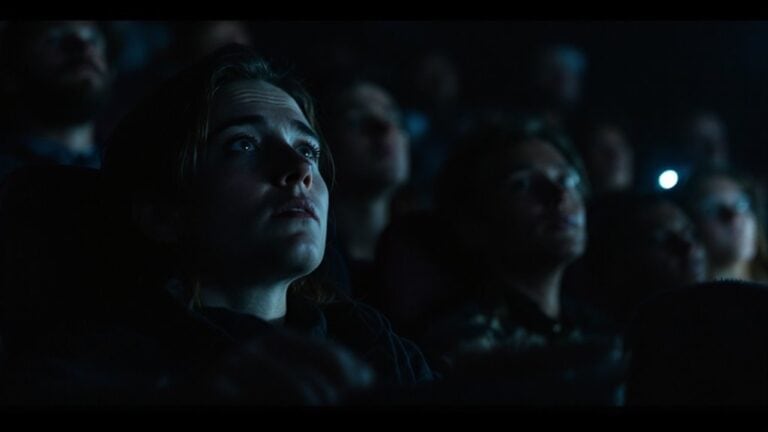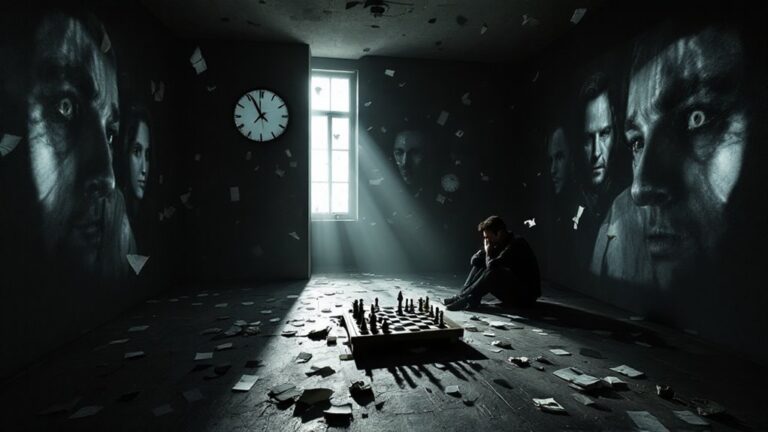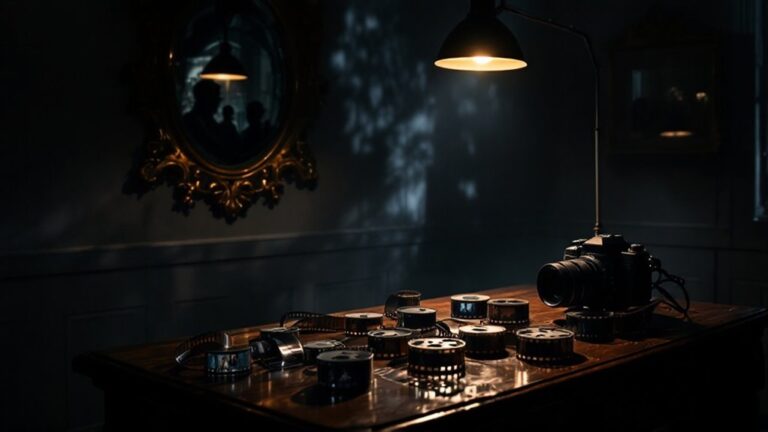The Impact of Editing in Nolan’s Films
In Nolan’s films, editing is far more than technical craft; it shapes narrative and emotion with precision. You’ll notice how non-linear storytelling in *Memento* and the intricate cross-cutting in *Inception* build suspense and deepen audience engagement. By manipulating time, Nolan challenges your perceptions, making you question reality in films like *Interstellar* and *Dunkirk*. His effective montages resonate emotionally, elevating character arcs and stakes. The collaboration between editing and auditory elements amplifies the storytelling, drawing you into a rich experience. As you explore further, you’ll uncover fascinating insights into the layers of his artistry and narrative complexity.
Table of Contents
Key Takeaways
- Nolan’s use of cross-cutting techniques creates emotional depth and intensity, allowing simultaneous narrative experiences that enhance audience engagement.
- Non-linear storytelling challenges traditional narratives, fostering suspense and complexity while reflecting characters’ psychological states through intricate timelines.
- Manipulation of time in his films explores existential themes and blurs reality, creating urgency and emotional resonance through varied temporal experiences.
- Effective montage enhances character development and emotional engagement, connecting viewers to the narrative’s stakes and aftermath post-climax.
- Collaborative actor dynamics and instinctive editing foster authentic performances and deeper connections, emphasizing narrative rhythm and emotional impact in each film.
Cross-Cutting Techniques
While editing may seem like a behind-the-scenes task, it’s essential in shaping the emotional landscape of a film, especially in Nolan’s works.
Cross-cutting techniques play a critical role in creating a cross-cutting impact, allowing you to experience multiple narratives simultaneously. By interweaving various scenes, Nolan builds intensity and emotional depth, inviting you to reflect on the relationships between different moments. This narrative layering not only keeps you engaged but also challenges your perception, as seen in *Inception* and *Dunkirk*. The juxtaposition of contrasting emotions can lead to powerful realizations, guiding your feelings through the Kuleshov effect. Furthermore, the use of cross-cutting enhances audience emotions by creating layered storytelling that heightens the stakes of each scene.
Moreover, this technique can effectively connect multiple storylines, creating a sense of unity within the diverse narrative threads.
Fundamentally, cross-cutting isn’t just a stylistic choice; it’s a deliberate method that enhances storytelling by manipulating time and space.
Non-Linear Storytelling

Non-linear storytelling captivates audiences by defying traditional narrative structures and immersing them in a puzzle-like experience.
In films like “Memento” and “The Prestige,” you encounter intricate timelines and shifting perspectives, inviting you to engage in memory exploration. This approach not only enhances suspense but also challenges your perception of time and causality. Nolan’s first nonlinear script was “Following,” which marked his directorial debut and set the stage for his signature style. His films often feature nonlinear storytelling techniques, reflecting characters’ psychological states and enhancing the overall immersive experience.
As you piece together the fractured narrative, you share in the characters’ confusion, especially those grappling with memory issues. Nolan’s meticulous planning guarantees coherence amidst complexity, allowing themes of chaos and morality to resonate deeply.
Effective Montage Use

Effective montage use in Nolan’s films not only enhances storytelling but also deepens emotional engagement. By employing cross-cutting techniques, he captures multiple moments that reveal characters’ lives, particularly after pivotal events.
For instance, the ending montage in *The Dark Knight* poignantly illustrates the aftermath of Harvey’s death, setting the stage for *The Dark Knight Rises*. This montage significance lies in its ability to raise stakes while providing a glimpse into character development post-climax, effectively engaging the audience. Additionally, his use of circular narrative structure allows for a seamless integration of these montages, reinforcing the thematic coherence throughout the film.
Furthermore, the pacing and visual consistency guarantee smooth shifts, further enriching the narrative. Nolan’s careful orchestration of music and voiceover adds layers of emotional resonance, allowing viewers to connect with characters profoundly, resulting in a rich tapestry of emotional layering that resonates long after the credits roll. His films often showcase thematic elements of time, highlighting the profound impact of moments that shape characters’ journeys.
Visual Style Influence

Nolan’s mastery of montage not only shapes the narrative but also sets the stage for his distinctive visual style. He employs practical lighting, often utilizing halogen fresnels to create a documentary-like authenticity. This choice enhances the visual symbolism present in his films, as each light source feels intentional and grounded. By favoring practical effects over CGI, Nolan guarantees a tangible realism that resonates with viewers. In his last three films, he collaborated closely with Hoyte Van Hoytema to push the boundaries of visual storytelling. The use of Kodak film further enriches the emotional depth and color richness in his cinematic narrative.
| Visual Style Element | Description |
|---|---|
| Halogen Fresnel Lighting | Creates realistic, documentary-style aesthetics |
| Minimal CGI Use | Enhances authenticity and immersiveness |
| Shooting on Film | Provides rich shadows and detailed visuals |
| Large-Format Cinematography | Offers immersive visuals with wide fields |
| Real Locations | Adds a genuine patina, enhancing the narrative |
This careful attention to detail allows you to engage deeply with the emotional layers of his stories.
Narrative Complexity
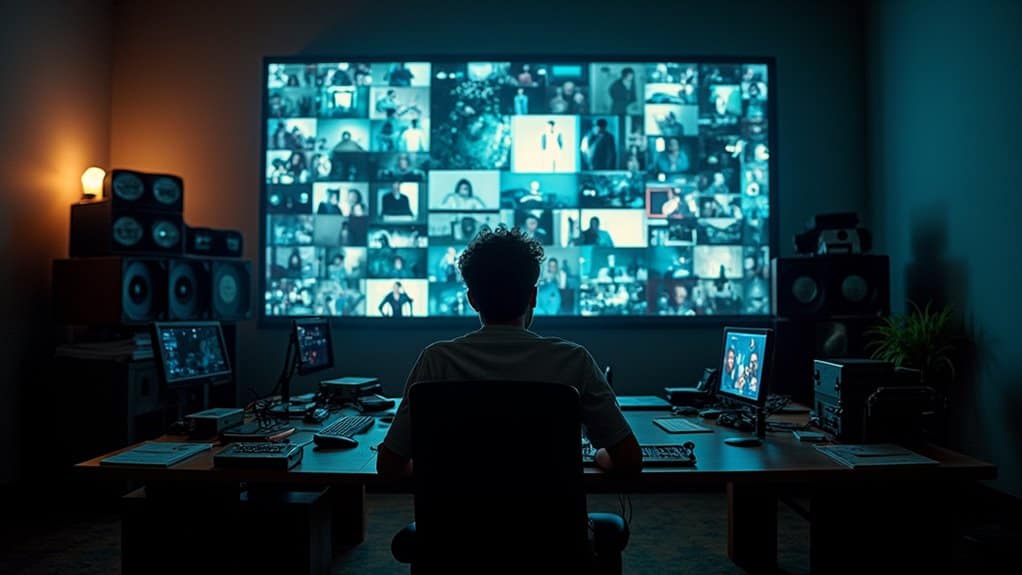
When you watch a Christopher Nolan film, you’re often confronted with non-linear storytelling techniques that challenge your understanding of time and plot.
His recursive narrative structures, especially in movies like *Memento* and *The Prestige*, force you to piece together the story from fragments, creating a sense of intrigue and engagement that keeps you on your toes.
As you navigate through these intricate layers, you can’t help but feel the emotional weight of the characters’ experiences, adding a rich dimension to your viewing journey.
Non-Linear Storytelling Techniques
Non-linear storytelling techniques captivate audiences by upending traditional narrative structures and creating a more immersive experience. By presenting events out of chronological order, these techniques challenge your perception of time and causality, enhancing themes like chaos and morality.
The complexity of the narrative structure keeps you engaged, as you piece together the puzzle of the characters’ fates. This approach builds suspense and uncertainty, making each revelation impactful. For instance, in films like “Memento” and “The Dark Knight,” contrasting character portrayals deepen your understanding of their motivations.
Ultimately, non-linear storytelling not only intrigues but also fosters a rich emotional connection, inviting you to reflect on the intricate relationships between choice, consequence, and identity throughout Nolan’s cinematic universe.
Recursive Narrative Structures
While exploring narrative complexity, recursive structures stand out for their ability to weave multiple layers of storytelling into a cohesive whole.
In films like *Inception*, you encounter recursive storytelling through its layered dream levels, where each level complicates your understanding of time and reality.
Nolan employs narrative recursion with crosscutting techniques, switching between these levels to heighten urgency and tension.
Visual and audio cues, such as slow motion, help clarify the shifting landscape, while character dialogue keeps you informed about their precarious situation.
This intricate design not only disorients but also challenges you to engage more deeply with the narrative, prompting you to piece together the threads of the story, thereby enhancing your overall viewing experience.
Directorial Editing Approach

When you explore Nolan’s directorial editing approach, you’ll notice how he fosters collaborative actor dynamics that allow performances to blossom through spontaneity.
His instinctive editing techniques, often shaped by tight schedules and daily reviews, create a rhythm that enhances both the narrative and emotional impact of his films.
This blend of actor engagement and quick decision-making not only shapes the story but also invites you to connect more deeply with the characters and their journeys.
Collaborative Actor Dynamics
Nolan’s collaborative actor dynamics foster an environment where creativity thrives, allowing actors to explore their roles deeply. By minimizing the use of video village and encouraging direct interaction, he enhances actor collaboration, leading to a unique performance synergy.
Actors enjoy autonomy, taking multiple takes without strict time constraints, which fosters a sense of ownership over their characters. The phone-free sets maintain focus, while Nolan’s emphasis on performance over technical aspects allows for spontaneity and improvisation.
This respectful atmosphere guarantees that actors feel valued, empowering them to contribute meaningfully to the narrative. By prioritizing their input and insights, Nolan creates a harmonious work environment that ultimately enhances the depth and authenticity of their performances, making each scene resonate more profoundly.
Instinctive Editing Techniques
Many filmmakers rely on traditional editing methods, but Nolan embraces instinctive editing techniques that elevate his storytelling. His fast-paced editing captures the raw energy of each scene, guaranteeing that the film maintains its momentum.
This intuitive approach feels spontaneous, yet it’s deeply thought out, reflecting influences from art and mathematics. By focusing on energy preservation, Nolan’s swift editing decisions create a gripping experience for the audience.
Techniques like cross-cutting intensify emotions, layering narratives that unfold simultaneously, while his meticulous planning guarantees visual cohesion. Each cut serves a purpose, enhancing the story’s depth and allowing viewers to connect with the characters on a more profound level.
In this way, instinctive editing becomes a powerful tool in Nolan’s cinematic arsenal.
Emotional Audience Engagement
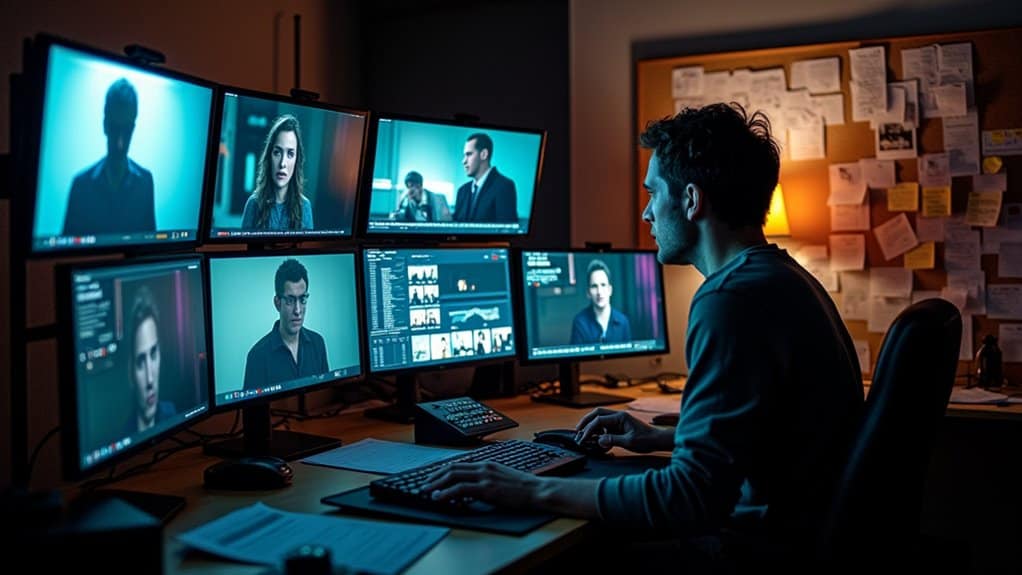
Although the intricacies of editing may often go unnoticed, they play an essential role in forging emotional connections between the audience and the narrative.
Nolan’s films excel in creating emotional resonance and audience immersion through various techniques, such as:
- Cross-cutting: Building tension and layering emotions, especially in *Inception* and *Dunkirk*.
- Non-linear editing: Engaging viewers in the protagonist’s psyche, particularly in *Memento*.
- Auditory storytelling: Collaborating with Hans Zimmer to deepen emotional experiences.
Manipulation of Time

As you explore Nolan’s films, you’ll quickly notice how he masterfully manipulates time to create complex narratives that challenge your perception.
His use of temporal manipulation, as seen in Memento‘s reverse chronology and Inception‘s layered dreams, invites you to experience events out of order, mirroring the characters’ struggles.
In Interstellar, time itself becomes an antagonist, highlighting existential themes like the relentless passage of time, which shapes human experience.
Dunkirk‘s three timelines evoke a sense of urgency, while Tenet‘s inversion plays with the very nature of time.
Each film forces you to confront your understanding of reality, blurring the lines between memory and existence, allowing for a rich exploration of the human condition through the lens of time.
Collaborative Filmmaking Process
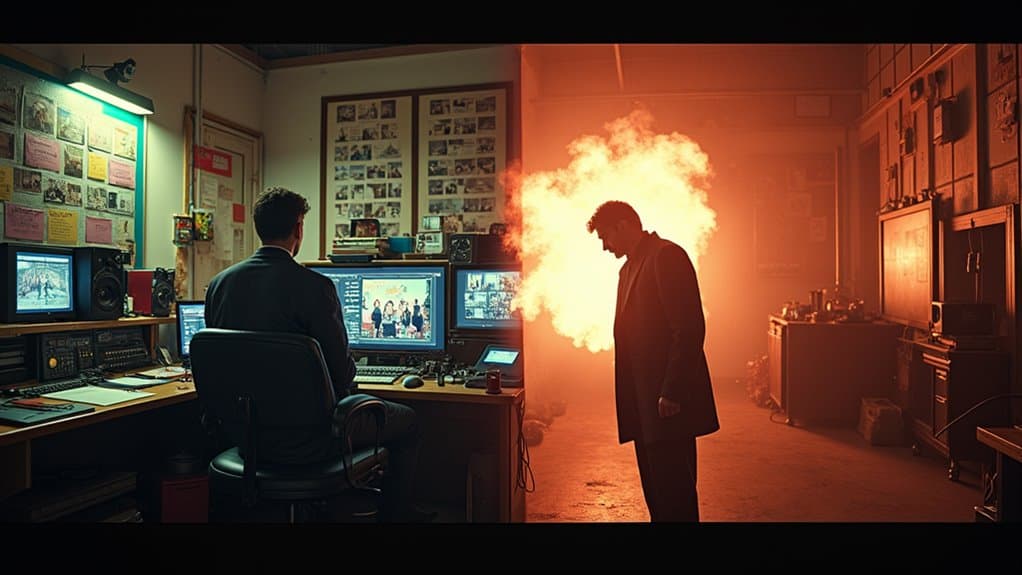
Nolan’s collaborative filmmaking process stands out for its emphasis on direct interaction with actors, fostering a unique environment where creativity thrives. This approach creates a space for actor collaboration and nurtures creative synergy.
Here are three key elements that define his process:
- Direct Engagement: By avoiding a video village, Nolan maintains close contact with actors, enhancing their performances.
- Performance-Centric Focus: He prioritizes emotional connection, allowing actors to explore scenes intuitively, which leads to authentic portrayals.
- Harmonious Environment: With minimal distractions and a strong emphasis on rehearsal, actors feel empowered to take risks, resulting in spontaneous moments that elevate the film.
Through these methods, Nolan cultivates a collaborative atmosphere that not only benefits the actors but also enriches the narrative experience for audiences.
Conclusion
In Nolan’s films, editing acts like a masterful conductor, orchestrating a symphony of time, emotion, and complexity that resonates deeply with audiences. His cross-cutting and non-linear storytelling weave narratives that challenge perceptions, drawing viewers into a labyrinth of thought and feeling. By manipulating time and utilizing montage, he not only enhances visual style but also deepens emotional engagement, inviting us to explore the intricacies of human experience. Nolan’s editing is, without a doubt, a powerful storytelling tool.


